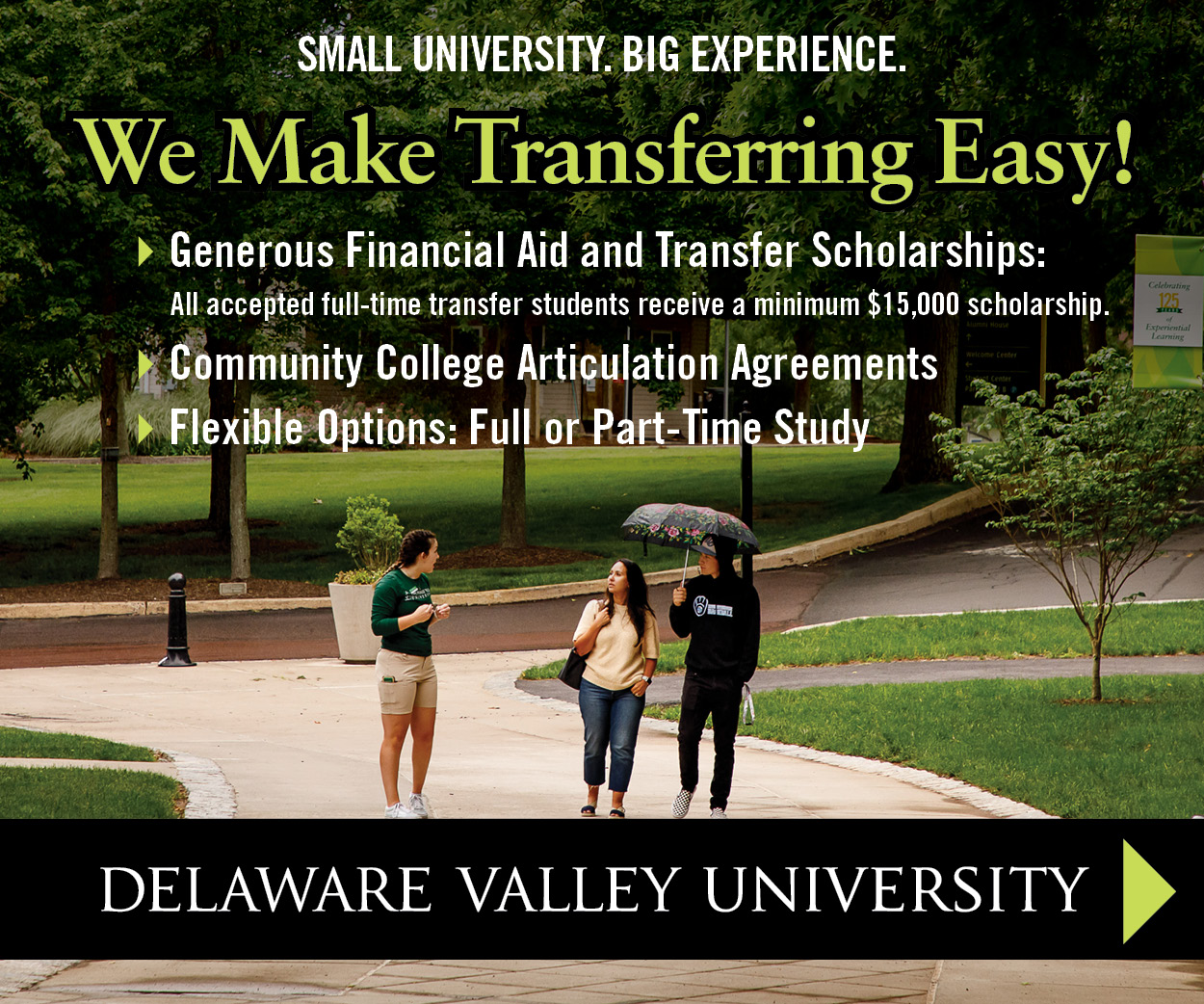In a new webcasting production
class, Bucks students
produce the video
news reports that appear on
Bucks website and on the
HD monitors located
around campus.
The class is a required
course for journalism
majors. It gives students
real-world experience in
webcasting, part of today’s
tools needed by most journalists.
“It’s definately new and
exciting,” says Alejandra
Lewandowski, journalism
major and tech assistant for
the new course entitled
Webcast News Production.
Speaking as one of the
“guinea pigs,” one of the
first to take on the new class
in the fall semester of 2011
she said, “Webcasting is the
future of journalism. It’s
important to be able to have
those skills – the editing
skills, the camera skills.
Multimedia is where it’s at,
especially online.”
Journalism Professor
Tony Rogers agrees, saying,
“It’s part and parcel of the
future of the news business.
It’s no longer enough for
journalists to just know how
to write and report. They
need to know how to use
the tools of multimedia
journalism, and this is part
of that.”
“Tony [Rogers] presided
over it, but it was pretty
much up to us to take it in
the direction we wanted,”
explained Lewandowski.
“None of us knew quite
what was involved so we
had to kind of start from
scratch. The college provided
the cameras and the software.”
Rogers reiterated that saying,
“the class is a work in
progress. One thing I’ve
learned is that it takes
longer for students to edit
their videos than I’d
thought it would, so we
can’t produce as many
videos a semester as I’d first
hoped. But I’ve also learned
that most students have a
pretty intuitive sense of
what a video news report
should look like, so that
makes things easier.”
“There’s a lot of creativity.
People can come in with a
lot of footage and anybody
could sit with it and divide
it up in lots of different
ways,” and each would do
something different with it
Lewandowski says. Her
excitement for the process is
apparent when she talks
about the editing. She says,
“Like five hours will go by
and you won’t even notice.”
The class began with students
learning to use the
Adobe Premiere Pro software,
a complex video editing
program. “Matt
Stanley, a video editor for
the Bucks County Courier
Times came in and taught
us. He uses Premiere Pro
and he demonstrated it for
us, so we learned a lot,” said
Lewandowski.
Premiere Pro can be a
challenging program to
master because it is such a
powerful editing tool. “It’s
very advanced software,”
Lewandowski says.
Echoing Rogers’ sentiments,
“videos,” she says, “take a
long time to edit.” It’s not
unusual to come to class
with 45 minutes of footage
to edit down into a short
finished product.
This semester, Rogers is
teaching Windows Movie
Maker too, a simpler program
to learn but with
fewer capabilities than
Premiere Pro offers. “This
semester, I’m helping out,”
Lewandowski said as she
has used Windows Movie
Maker in the past and will
share her knowledge with
the class.
The software is not the
only focus of the course.
Part of the course is broadcast
writing, a more conversational
style than hard
news reporting. Rogers also
teaches about the cameras
and shooting footage.
With camera work
Lewandowski learned that,
“You have to find a place
where you have good
audio. It’s not essential that
you have good quality
video. It’s essential that you
have good quality audio.
Poor quality audio will ruin
everything. That’s actually
more important.” Rogers,
she said, hammers the point
that a crowded cafeteria is
not the place to get good
audio.
Lewandowski has learned
a few things through trial
and error. For example,
“the viewfinder is a little
larger than what your camera
actually records. So if
you are too close on somebody’s
face, you’ll cut their
head off,” she said.
Naturally, there are the
minor technical details like
making sure the microphone
is turned on. “Even
if it’s plugged into the camera,
if it’s not turned on,
you’ll get no audio,” she
said. “Having been through
the class once and seen
these issues, I know them.”
The course covers other
technical issues such as
transferring files from camera
to computer. The camera
must be plugged in, and
videos saved to the desktop
and jump drives. As
Lewandowski put it, “save,
save, save. The program
tends to crash.” This she
believes is because Premiere
Pro is designed to work on
64 bit computers and all of
the computers in the journalism
lab are 32 bit.
The class has its own area
where the webcasts are
posted called “View from
Bucks” at
http://www.bucks.edu/
~rogerst/viewfrombucks.ht
m . Once webcasts are completed,
they are placed on
the HD monitors outside
the cafeteria, outside the
Gateway auditorium and in
the Founders lobby around
the Newtown campus.
They run Monday thru
Friday from 12:30 to 1:30.
The videos cover all sorts of
topics like student opinion,
profiles of particular professors
or students and campus
events.
The Webcast News
Production course was fun
for Lewandowski. As she
put it, “It’s exciting because
it’s something new and it’s
exciting for me personally
because I found that I’ve got
a knack for it.”


